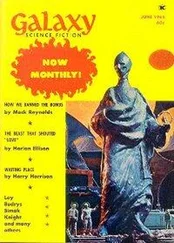Ed Lacy - The Best That Ever Did It
Здесь есть возможность читать онлайн «Ed Lacy - The Best That Ever Did It» весь текст электронной книги совершенно бесплатно (целиком полную версию без сокращений). В некоторых случаях можно слушать аудио, скачать через торрент в формате fb2 и присутствует краткое содержание. Жанр: Старинная литература, на русском языке. Описание произведения, (предисловие) а так же отзывы посетителей доступны на портале библиотеки ЛибКат.
- Название:The Best That Ever Did It
- Автор:
- Жанр:
- Год:неизвестен
- ISBN:нет данных
- Рейтинг книги:4 / 5. Голосов: 1
-
Избранное:Добавить в избранное
- Отзывы:
-
Ваша оценка:
- 80
- 1
- 2
- 3
- 4
- 5
The Best That Ever Did It: краткое содержание, описание и аннотация
Предлагаем к чтению аннотацию, описание, краткое содержание или предисловие (зависит от того, что написал сам автор книги «The Best That Ever Did It»). Если вы не нашли необходимую информацию о книге — напишите в комментариях, мы постараемся отыскать её.
The Best That Ever Did It — читать онлайн бесплатно полную книгу (весь текст) целиком
Ниже представлен текст книги, разбитый по страницам. Система сохранения места последней прочитанной страницы, позволяет с удобством читать онлайн бесплатно книгу «The Best That Ever Did It», без необходимости каждый раз заново искать на чём Вы остановились. Поставьте закладку, и сможете в любой момент перейти на страницу, на которой закончили чтение.
Интервал:
Закладка:
Pearson learned a great deal about photography here, for the other cameramen had all been professional newspaper and magazine photographers. Martin covered the front lines, flew a bombing mission, and rode a PT boat to Yugoslavia. Life was exciting but he missed the money he'd made back in the States and Pearson was constantly searching for an angle. Black-market cigarettes were small time; a bigger deal was selling G.I. photographic paper to Italian studios, but that was risky.
Almost any sort of camera sold for several hundred dollars, while a good camera would bring a thousand or more from the G.I.'s. A Yank photographer had a map of Germany with the towns with camera factories circled and he often talked of coming into one of these towns with the troops and “grabbing off a Rolleiflex or a Leica for myself.”
Martin saw bigger possibilities, copied the map when he was sent into France after D-day. Months later Martin was with an infantry company when they stormed a German city noted for its expensive reflex cameras. While the soldiers were mopping up snipers, Martin drove a jeep directly to the factory, walked in holding a carbine to find Polish slave laborers still at work.
They stared at him without much emotion, only a kind of patient beaten weariness, and stood at their benches as Martin carried twenty-seven cameras (each in a neat wooden box) out to his jeep. The Nazi factory manager, finally convinced Martin was alone, at last came out of his office, demanded to know what the hell Pearson was doing.
Martin answered by busting his head open with the carbine, then shouted at the Poles, “You're free! Understand—free! Take what you want and scram!” He waved his hands at the open doors, but they still didn't move. Martin had taken all the rations out of his jeep, to make room for the cameras, and he handed these out. When he left he saw the Poles gulping the rations, then trooping out with whatever instruments they could carry, and soon the factory went up in flames.
After giving cameras to the motor pool sergeant, the PRO captain, and several others, Martin still had sixteen cameras and within the following month he was able to sell these for an average of $800 each, giving him nearly $13,000.
When the war in Europe was over Martin was stationed in Frankfurt, then in Paris, and in both cities he lived well, for he was an American sergeant with money and a PX card that meant cigarettes, candy, and soap. He got into some big crap games, and at one time his $13,000 went to $21,000 and once it shrunk to $4,500. He had $11,000 in Allied currency when he was awaiting shipment back to the States. He managed to change this into $8,500 in American money and money orders.
In January, 1946, Pearson was discharged and returned to Bay Corners. Mary Pearson had carefully banked all his allotment checks, already picked out a house they would buy, with a garage that could be made into a studio. He never told her about his money. In his confession Pearson stated:
I really don't know why I kept the money a secret from my wife. But I did. It wasn't the money, rather it was something I knew I could never explain to her. She would think it wrong and well... to me it wasn't a matter of right or wrong. I'd merely been lucky.
When they were married Mary, as the college graduate, had been the brains and Martin a simple farm boy. But the Martin Pearson who returned to Bay Corners knew all the angles, spoke French, Italian, and German, had slept with many women, seen bombed cities and dead men and women, sunned himself on Capri, the Venice Lido, the beach at Cannes. He looked at the plain, plump, country-school teacher who was his wife and told her he couldn't take Bay Corners any longer. He didn't love Mary, but she was his wife and ho wanted to make a try at living with her.
Martin said he didn't know exactly what he wanted to do, but he wanted to live in New York City. Of course Mary Pearson thought this foolish: she had her teacher's job in Bay Corners, their families lived there, and ”... I hear some Syracuse people plan to build motels out by the lake. Means plenty of picture work for you. I figure you should make fifty dollars a week at least.”
She talked Martin into staying in Bay Corners and he remained there—for three months. The day they were to buy a house, he took a bus to New York City. Mary Pearson never knew what happened to him till seven years later when reporters swooped down on her with Martin's picture on the front page.
Pearson spent a restless year in New York, working in a photography studio. New York wasn't what he was looking for. He decided to study color photography under the G.I. Bill and while looking into the various schools, he overheard some ex-G.I.'s talking about Paris schools.
In June, 1947, he got passage on a clean little freighter and sweated out a hot summer in Paris, living frugally and taking it easy as he brushed up on his French, hunted for an apartment. In September he enrolled in a photography school, but there wasn't much they could teach him. When he said he was interested in motion-picture work, his teacher introduced him to Theresa Veyron, a film editor.
No man had ever called Therese pretty. She was tall and slim, flat-chested, and had heavy ankles. Her long, lean face contained sad eyes, an overlarge mouth, and was set off by carefully brushed brown hair that hung to thin shoulders. The only child of a middle-class family, when she was twenty-two —and with the help of a dowry—Theresa married a fifty-two-year-old man who managed a movie theater on l'avenue des Ternes. He openly spent her dowry on his mistress, made a point of remarking about every large-breasted woman they saw on the streets. They politely hated each other and for lack of something to do, Theresa took a job as a secretary with a concern that made short advertising movies. At the start of the war Theresa was a film cutter.
Therese never considered leaving her husband but the war broke the pattern of most lives: for her it killed her husband, wiped out her family and home during an air raid, and left her mildly active working on underground movies that were never made, and lonely. With the war over she returned to the film business. There were plenty of jobs but no money, and although she worked hard she was always hungry and seedy looking.
Therese resigned herself to the fact that she was unattractive, that romance was out. Americans annoyed her and she only agreed to go out with Martin because it meant a good supper. He took her to a modest restaurant and she stuffed herself as he talked about photography. Over coffee and hot rums he carefully listened to her ideas about movies. And when he walked Therese to her three-room flat, he politely asked if he could sleep with her. She wasn't certain whether she was angry, amused, flattered, or astonished.
They turned out to be ideal lovers; each not only aroused a sincere passion in the other, but each of them was fanatically interested in the same subject—motion pictures. As soon as Therese could evict a girl roomer, Martin moved in. He made no secret of his money and they decided he would continue with school—to get the subsistence money—and in time they would open a small studio, produce the clever two-minute commercial used in French theaters between the showings of the regular feature.
Pearson had about seven thousand dollars left and they carefully hoarded this, living with moderate ease on his G.I. school money. They moved on the fringe of the movie crowd at Joinville, spent their spare time hunting for a studio, looking at equipment—and buying nothing but a cheap 16mm movie camera Martin used for practice.
Life was leisurely; they were sure of each other and their future: they were very happy. Pearson was one of the few Fortunate Americans who wasn't searching for the Left Bank of the 1920's in post-World War II Paris. Martin loved the Paris he found. It made no difference to him if he ate in a swank tourist restaurant or had supper in one of the student places for eighty francs. He wanted nothing more out of life than to sip coffee and eat croissants in a cafe each morning, racing through the Paris Herald in a few seconds, then slowly stumbling through a French morning paper over his second cup. He would play the pinball machine and finally go to school. In the afternoons he roamed the city, taking pictures of the people, the wonderful old dirty buildings. He was amused by the tourists and never lonely for the States. In fact during the five years he spent in Paris he claims he only went to the American Express once. At five in the afternoon he would sit at a sidewalk cafe and exchange small talk with the waiters as he waited for Therese to have an aperitif with him. He enjoyed watching her in the crowds, the eager impatient way she walked, as if there was absolutely nothing in the world as important as rushing to meet and kiss Martin Pearson.
Читать дальшеИнтервал:
Закладка:
Похожие книги на «The Best That Ever Did It»
Представляем Вашему вниманию похожие книги на «The Best That Ever Did It» списком для выбора. Мы отобрали схожую по названию и смыслу литературу в надежде предоставить читателям больше вариантов отыскать новые, интересные, ещё непрочитанные произведения.
Обсуждение, отзывы о книге «The Best That Ever Did It» и просто собственные мнения читателей. Оставьте ваши комментарии, напишите, что Вы думаете о произведении, его смысле или главных героях. Укажите что конкретно понравилось, а что нет, и почему Вы так считаете.












